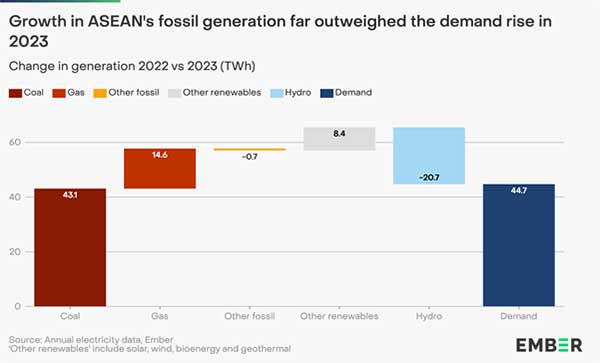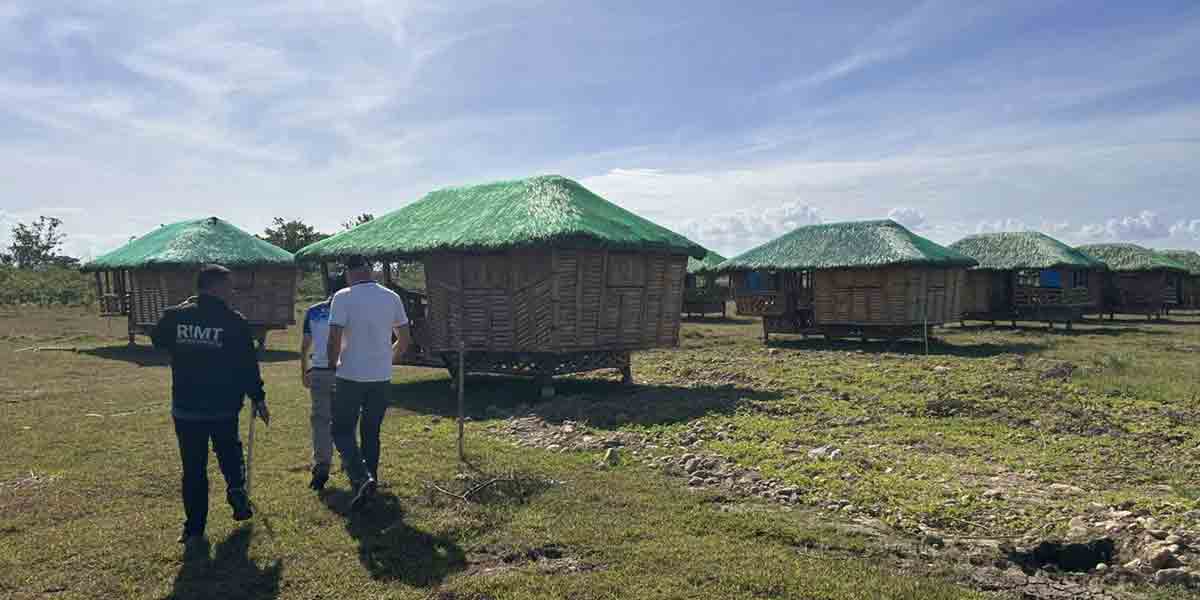
By Francis Allan L. Angelo
ASEAN’s growing electricity demand continues to outpace the expansion of renewable energy, a trend underscored by a recent report from Ember.
The region’s electricity consumption rose by 3.6% in 2023, a surge entirely met by fossil fuels, signaling a pressing need to accelerate renewable energy projects.
ASEAN’s electricity demand is projected to soar by 41% by 2030.
However, despite falling clean energy costs, renewable energy sources, particularly solar and wind, are not expanding quickly enough to meet this demand.
Solar energy generation, for instance, grew by only 2.7 TWh in 2023, a modest increase given the region’s potential.
The complementarity of solar and wind energy presents an opportunity for ASEAN. Solar power typically peaks during midday, while wind speeds are higher at night, making regional energy interconnection vital.
As of July 2023, eight out of 18 major cross-border transmission projects were completed, adding 7.7 GW of transmission capacity, with the Lao PDR-Thailand-Malaysia-Singapore Power Integration Project marking a key milestone.
“Power interconnectivity is key to ASEAN’s economic cooperation. By fostering a shared identity around renewable resources, interconnection can drive economic growth and create jobs while enhancing regional integration and clean energy trade,” said Souliya Sengdalavong, Deputy Director General of Energy Policy and Planning Department, Ministry of Energy and Mines of Lao PDR.
Despite progress in power connectivity, the region remains heavily reliant on fossil fuels. In 2023, 74% of the region’s power came from fossil fuels, with coal being the primary source, contributing to a 6.6% rise in emissions, according to the report. “ASEAN’s shift to renewable energy promises new jobs, stronger energy security, and economic growth,” said Dr. Dinita Setyawati, Ember’s Senior Electricity Policy Analyst for Southeast Asia. “Collective efforts through interconnection programs and international cooperation offer solutions to the region’s energy challenges.”
Hydropower, a significant renewable resource in ASEAN, saw a 21 TWh decline in generation in 2023 due to droughts. Despite additional hydro capacity, this drop highlights the risks of over-reliance on hydroelectricity as climate change continues to impact water availability. The region must diversify its renewable energy mix, particularly by scaling up solar and wind energy investments.
With renewable costs falling—solar and wind have seen price reductions of up to 81% and 53%, respectively—ASEAN has a golden opportunity to transition faster. “The falling costs of solar and wind energy provide a significant opportunity for ASEAN countries to move away from fossil fuels,” noted Shabrina Nadhila, Ember’s Electricity Policy Analyst for Southeast Asia.
However, grid infrastructure remains a major obstacle to renewable energy growth. Innovative technologies, such as clean flexibility solutions and battery storage, will be crucial for integrating renewable sources and achieving ASEAN’s climate and energy security goals. Moreover, regional cooperation is expected to play a critical role in facilitating this energy transition.
The report emphasized that ASEAN must increase its renewable capacity by three to five times by 2035 to meet its climate goals and rising energy demands. Several pathways suggest that such an increase is possible, particularly with the right policy frameworks, international collaboration, and investments.
ASEAN countries, led by nations like Vietnam and the Philippines, have introduced policies to boost renewable energy. Vietnam has seen substantial growth in its solar energy sector, thanks to its feed-in tariff policies, while the Philippines has embraced rooftop solar projects and peer-to-peer trading mechanisms.
Despite these advancements, concerns about grid capacity and policy execution persist. Without substantial improvements, ASEAN risks missing the opportunities offered by declining renewable energy costs and falling short of its climate targets.





















